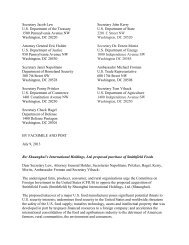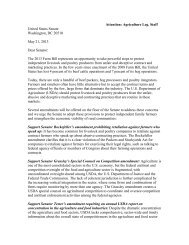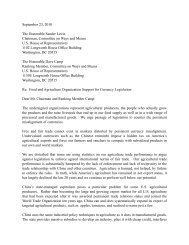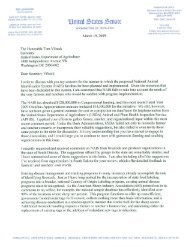Exhibit 8, 100416 Brazil FMD Risk Evaluation - R-Calf
Exhibit 8, 100416 Brazil FMD Risk Evaluation - R-Calf
Exhibit 8, 100416 Brazil FMD Risk Evaluation - R-Calf
You also want an ePaper? Increase the reach of your titles
YUMPU automatically turns print PDFs into web optimized ePapers that Google loves.
officials, the private sector’s participation has also strengthened official structures and improved<br />
sanitary actions, mainly within the local units of the surveillance system.<br />
The <strong>Brazil</strong>ian Government has promoted and guaranteed the involvement of various groups of<br />
CONASAN into a plan called the National Program for Foot-and-Mouth Disease Eradication, or<br />
PNEFA. These groups are composed of people interested or involved in livestock production or<br />
health, such as rural producers, livestock and livestock product industry personnel, trade agents,<br />
private veterinarians, and members and officers of farmers’ unions, cooperatives, universities, and<br />
town halls. The objective of these alliances is to bring greater awareness, a wider scope,<br />
transparency, and credibility to the program. The Federal Government coordinates the<br />
implementation of the national plan.<br />
Eradication of <strong>FMD</strong> in Santa Catarina followed the basic strategies implemented by PNEFA and are<br />
summarized here:<br />
Strengthening and maintaining the animal health system, including hiring personnel for the<br />
official veterinary service through public agreements.<br />
Enacting and enforcing compliance with animal health laws.<br />
Registering rural holdings, herds, and all other establishments linked to the livestock<br />
production system.<br />
In its first phase, periodic mass vaccination of bovine animals and buffaloes which can be<br />
suspended and followed by actions to strengthen the primary surveillance system.<br />
Working on vesicular disease suspicions and implementing a stamping-out policy if officials<br />
confirm <strong>FMD</strong>.<br />
Control and surveillance of animal movement and prohibiting the entry of at-risk animals and<br />
animal products.<br />
Strengthening community participation.<br />
Auditing and supervising premises as needed.<br />
Main activities of the <strong>FMD</strong> and other swine notifiable disease program<br />
Disease surveillance<br />
<strong>Brazil</strong>’s animal health service has a surveillance system that covers the entire country. The LVUs<br />
collect the necessary data and make decisions based on the data. Many official and private sources<br />
supply the system’s information. In Santa Catarina, the field units collect and process surveillance<br />
data and forward the information to the regional offices. Santa Catarina’s central unit and a national<br />
unit represented by DDA and the MAPA SDA are located in Brasilia.<br />
The DDA official collects data from the State level and forwards the information to the OIE and<br />
other parties such as the South American Commission for the Fight against <strong>FMD</strong>. Reports are sent:<br />
Weekly for disease notifications.<br />
Monthly for confirmed cases of animal diseases.<br />
Biannually for the results of each phase of vaccination against <strong>FMD</strong> for each Federal unit.<br />
Annually for full reports of epidemiological and sanitary information.<br />
Notification and investigation of suspected cases<br />
APHIS <strong>Evaluation</strong> of the Status of the <strong>Brazil</strong>ian State of Santa Catarina 27











